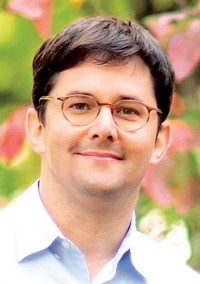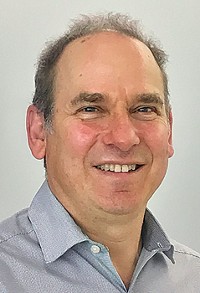Advertisement
Grab your lab coat. Let's get started
Welcome!
Welcome!
Create an account below to get 6 C&EN articles per month, receive newsletters and more - all free.
It seems this is your first time logging in online. Please enter the following information to continue.
As an ACS member you automatically get access to this site. All we need is few more details to create your reading experience.
Not you? Sign in with a different account.
Not you? Sign in with a different account.
ERROR 1
ERROR 1
ERROR 2
ERROR 2
ERROR 2
ERROR 2
ERROR 2
Password and Confirm password must match.
If you have an ACS member number, please enter it here so we can link this account to your membership. (optional)
ERROR 2
ACS values your privacy. By submitting your information, you are gaining access to C&EN and subscribing to our weekly newsletter. We use the information you provide to make your reading experience better, and we will never sell your data to third party members.
Synthesis
E. Bright Wilson Award In Spectroscopy
by Ann M. Thayer
February 9, 2015
| A version of this story appeared in
Volume 93, Issue 6
Sponsored by the ACS Division of Physical Chemistry
It’s no exaggeration to say that R. J. Dwayne Miller can see reactions. He has captured motions at the atomic level by lighting up the movements of atoms as they occur.
A unifying dream across all branches of chemistry is to observe the very events that are fundamentally chemistry, Miller believes. “Each discipline is different, but one intellectual ‘secret handshake’ among chemists is thinking about the transition state and barrier crossing, and how a molecule interconverts from one form to another.”
However, visualizing reactions was always considered only a thought experiment, given the enormous challenges for simultaneously achieving the femtosecond time and atomic spatial resolutions required for real observations. But Miller’s group at the University of Toronto made the experiment possible in the lab by developing ultrabright electron sources. His research is now being further advanced in Hamburg, Germany, where he is a director of the new Max Planck Institute for the Structure & Dynamics of Matter. He continues to hold an appointment as a professor of chemistry and physics at Toronto.
Miller’s work has broken barriers and opened up structural and chemical dynamics to atomic-level inspection. As a result, all researchers can aspire to see chemistry in action, says Robert A. Batey, chair of the Toronto chemistry department.
For example, research that Miller published in 2013 directly revealed the enormous reduction in dimensionality that occurs during the barrier-crossing events governing chemistry. He observed that all of the atomic motions coupled to a formally photoinduced charge-transfer process in an organic system could be distilled and mapped onto three strongly correlated key motional modes directing the chemistry.
“This achievement is a major milestone in physical chemistry,” Batey explains. The reduction in dimensionality is the “magic of chemistry” that enables synthetic chemists to exploit a wide variety of reaction mechanisms to make virtually any molecule imaginable. And categorizing the modes involved in barrier crossing allows for mapping transition-state regions to help direct synthetic methods.
Miller is known for “his insightful research approaches, his vision for the future of molecular science, and his knack for identifying implications and practical applications of his research,” says Peter M. Weber, chemistry professor and dean of the Graduate School at Brown University. “He also has unique talents for communicating the joys of science to a broad audience.” In 2008, Miller founded Science Rendezvous, now an annual event across Canada, to engage the general public concerning the importance and support of science. The event has drawn more than 160,000 attendees and 5,000 volunteers.
Miller’s own enthusiasm for chemistry arose during “a great summer experience” working as a student at the former Whiteshell Nuclear Research Establishment in Manitoba. And ideas for his current work, he says, come through teaching and continuing to explore fundamental concepts.
Miller, 58, received a B.Sc. degree from the University of Manitoba in 1978 and did his graduate studies at Stanford University. His first faculty position was at the University of Rochester, followed by a move to Toronto in 1995, and to the Max Planck Institute in 2014.
Miller will present his award address before the Division of Physical Chemistry.






Join the conversation
Contact the reporter
Submit a Letter to the Editor for publication
Engage with us on Twitter